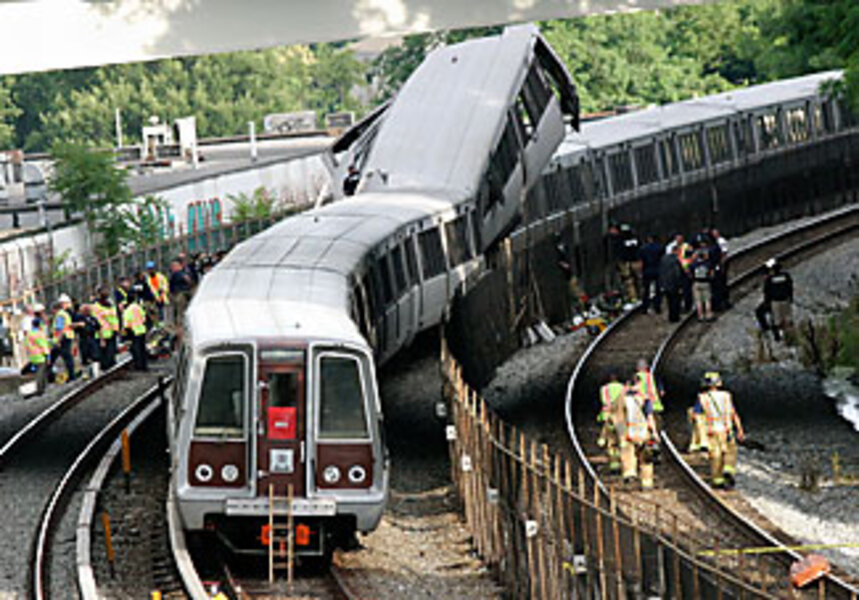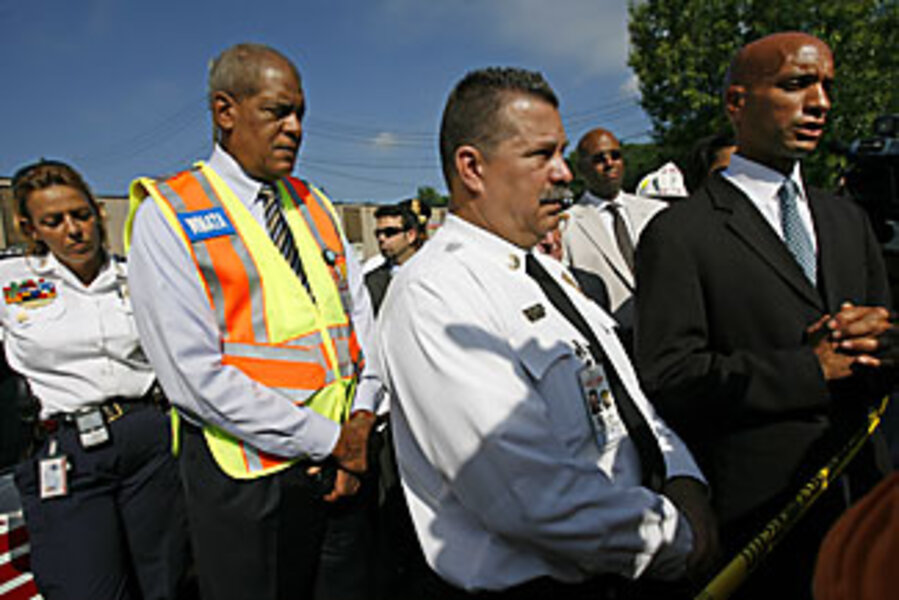Subway in crash was older, needed to be phased out
Loading...
| Washington
Washington residents were advised to avoid a major subway line Tuesday as the nation's capital coped with Monday's subway crash that killed at least nine and raised safety questions about a system that carries millions of tourists and commuters.
The crash, which snarled the Monday evening and Tuesday morning commutes, was the worst accident in the Metrorail system's 33-year history and the first involving customer fatalities since January 1982.
The accident occurred around 5 p.m. Monday, just outside the Fort Totten Station in northeast Washington. Two trains, each comprised of six cars, both were headed in the direction of downtown Washington.
Red line train 214 was stopped just outside the station, waiting for clearance to move to the platform. A second train, No. 112, came up behind it and "for reasons we do not know, plowed into that train," Metro General manager John Catoe Jr. told reporters.
The second train was moving so fast that one of its cars ended up on top of the first train. In addition to nine fatalities, at least 70 people were taken to area hospitals, officials said.
The accident came at the start of Monday evening's rush hour and disrupted the trip home for thousands of customers on the Metro system's Red Line, its busiest. Transit officials ran shuttle buses around the affected areas of the rail system. But on Monday evening, information was scarce, shuttle buses crowded, and commuters frustrated.
Before the start of Tuesday's commute, the website for the Washington Metropolitan Area Transit Authority said, "Customers should avoid the Red Line Tuesday." But many commuters turned out as usual, ready for delays.
The impact on commuters was apparently greatest in the area closest to the accident, where stations remained closed. The Washington Post reported Red Line trains were traveling Tuesday morning at a maximum speed of 35 m.p.h., slower than usual.
But the train this reporter took from Grosvenor Station in Rockville to downtown Tuesday morning seemed to be moving at a normal clip and was no more crowded than usual.
National Transportation Safety Board officials are just beginning an investigation into the accident. One area for examination is why the Metro system's computerized signal system failed in its mission to keep the trains from coming too close to each other. Another issue is why the operator of the striking train, who was killed in the crash, failed to apply brakes manually to prevent the accident.
The train that caused the accident was made up of Series 1000 cars, the oldest in the fleet. Debbie Herman of the NTSB told the Associated Press that the agency had warned of safety problems with the older cars and recommended that the cars be phased out or retrofitted to better withstand a crash. She said it was "unacceptable" that neither had been done.
The train that was struck was made up of newer cars that were equipped with data recorders to provide information in the event of an accident. The Series 1000 cars, the type in the striking train, do not have data recorders.







